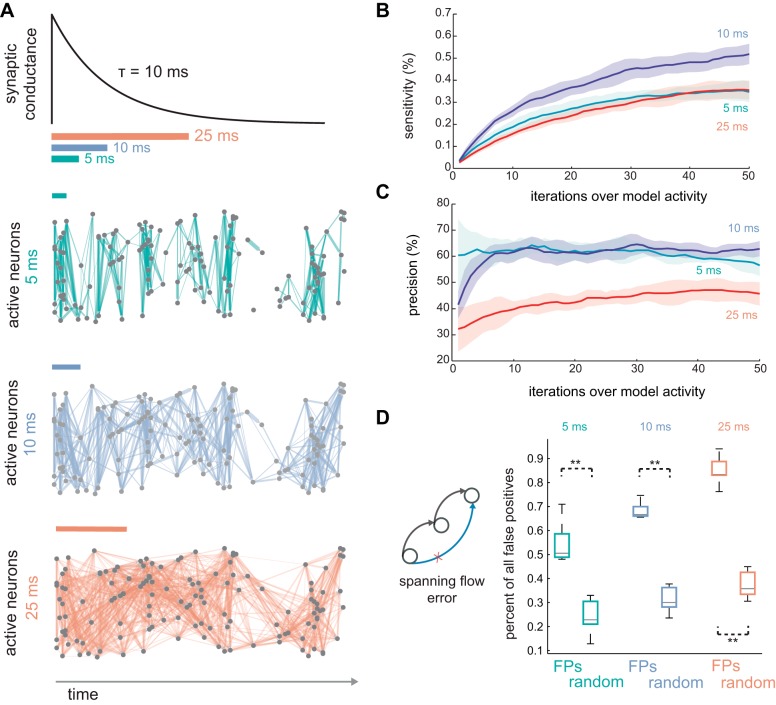Fig. 8.
Detection depends on definition of recruitment window. A: excitatory conductances in the model compared with three definitions of recruitment window. Synaptic interactions appear sparse for short interaction windows and dense for large lag windows. B: sensitivity improved fastest and most extensively when synaptic interactions were mapped with 10-ms recruitment windows (5 ms, blue; 10 ms, purple; 25 ms, red). C: precision improved fastest for 5-ms recruitment windows, whereas the 10-ms windowing resulted in slower increases and a modestly higher plateau (5 ms, blue; 10 ms, purple; 25 ms, red). D: conditioned on false positive detection, the probability of spanning a chain of strong synapses became increasingly likely as recruitment window increased. Spanning errors accounted for the majority of false positives for all recruitment window definitions. **P < 0.001.

